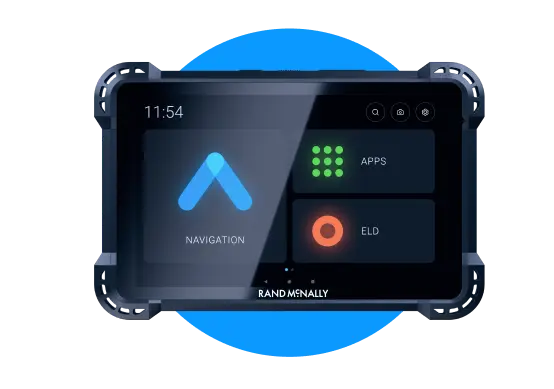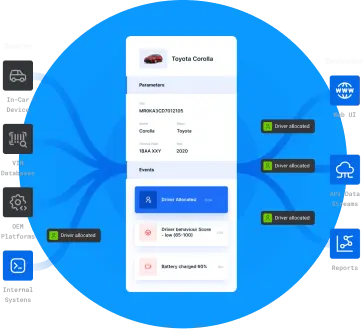
Effective delivery fleet management is crucial for optimizing resources, vehicles, time, finances, and driver performance. By implementing strategic management practices, companies can enhance driver productivity, reduce fuel consumption, and improve overall safety. This guide delves into the essentials of delivery fleet management, offering insights into best practices and the latest technological advancements shaping the industry.
Understanding Delivery Fleet Management
Delivery fleet management involves the strategic utilization of drivers and vehicles to maximize efficiency. Effective management enables organizations to:
- Increase Productivity: Streamlining operations to ensure timely deliveries.
- Reduce Costs: Implementing measures to lower fuel and maintenance expenses.
- Enhance Customer Experience: Providing reliable and prompt service.
- Decrease Carbon Emissions: Adopting eco-friendly practices to minimize environmental impact.
Companies may choose between internal fleet management, using owned vehicles and employed drivers, or external fleet management, outsourcing delivery services to third-party providers.
Key Components of Fleet Management
Managing a delivery fleet encompasses several critical aspects:
- Fleet Productivity: Monitoring performance metrics to ensure optimal operation.
- Operational Costs: Keeping track of expenses to maintain profitability.
- Maintenance and Inspections: Regular vehicle checks to prevent unexpected breakdowns.
- Vehicle and Driver Conditions: Ensuring both are in excellent condition.
- Safety: Prioritizing protocols to protect drivers and the public.
- Cross-Departmental Collaboration: Coordinating efforts across various teams for seamless operations.
- Customer Satisfaction: Meeting or exceeding delivery expectations to build loyalty.
Best Practices in Delivery Fleet Management
-
Enhancing Driver Productivity and Safety
Clear communication of expectations is vital. Providing drivers with real-time information on traffic, weather, and road conditions enables them to navigate routes safely and efficiently. Utilizing advanced telematics systems can offer insights into driver behavior, facilitating targeted training programs to promote safe driving practices.
-
Implementing a Preventive Maintenance Strategy
Regular maintenance is essential to prevent vehicle downtime. Developing a preventive maintenance schedule aligned with delivery routes ensures that servicing does not disrupt operations. Utilizing predictive maintenance technologies can help detect potential issues early, reducing the likelihood of costly repairs and enhancing vehicle longevity.
-
Monitoring Fuel Consumption and Costs
Fuel represents a significant portion of operational expenses. Tracking metrics such as fuel economy, consumption trends, and cost-per-mile can identify areas for improvement. Implementing fuel-efficient driving practices and optimizing routes can lead to substantial cost savings.
-
Making Informed Purchasing Decisions
Understanding the total cost of ownership (TCO) is crucial when acquiring new vehicles. Evaluating expenses, including acquisition costs, maintenance, fuel, and resale value, aids in making cost-effective decisions. Considering alternative fuel vehicles, such as electric models, can also contribute to long-term savings and sustainability goals.
Leveraging Fleet Management Software
Modern fleet management heavily relies on advanced software solutions that offer:
- Analytics: Providing insights into driver habits and vehicle performance to inform decision-making.
- Tracking: Real-time monitoring of assets and vehicles to ensure timely deliveries.
- Communication Tools: Facilitating seamless interaction between drivers and dispatchers.
- Navigation Systems: Offering optimized routing to reduce travel time and fuel consumption.
- Productivity Features: Automating tasks to streamline operations.
- Safety Monitoring: Detecting unsafe driving behaviors and vehicle issues to mitigate risks.
- Compliance Management: Assisting in adhering to regulatory requirements through automated tracking and reporting.
Emerging Trends in Fleet Management
The industry is witnessing several advancements:
-
Electrification of Fleets: Companies are increasingly adopting electric vehicles (EVs) to reduce emissions and operating costs. For instance, Amazon has made significant investments in electric heavy goods vehicles to enhance sustainability efforts.
-
Artificial Intelligence (AI) and Telematics: AI-driven tools are revolutionizing fleet management by simplifying complex tasks and providing actionable insights. Predictive maintenance systems detect potential mechanical issues early, reducing costly breakdowns and enhancing safety.
-
Data-Driven Decision Making: Vehicles equipped with sensors generate real-time data, enabling managers to optimize routes, monitor fuel efficiency, and prevent maintenance issues. Effective data management is essential to harness these benefits fully.
-
Sustainability Initiatives: There’s a growing emphasis on reducing carbon footprints through the adoption of EVs and alternative fuels. Companies are aligning fleet operations with environmental regulations and emission reduction goals.
-
Enhanced Safety Measures: Advanced driver-assistance systems (ADAS) and AI-powered monitoring tools are being integrated to promote driver safety and reduce accidents.
Choosing the Right Fleet Management Solution
When selecting a fleet management system, consider the following features:
- Comprehensive Analytics: To gain insights into operations and identify improvement areas.
- Robust Tracking Capabilities: Ensuring real-time visibility of vehicles and assets.
- Effective Communication Tools: Facilitating seamless interaction between team members.
- Advanced Navigation Systems: Providing optimized routing solutions.
- Productivity Enhancements: Automating workflows to increase efficiency.
- Safety Monitoring Features: Detecting and addressing potential risks proactively.
- Compliance Support: Assisting in adhering to industry regulations and standards.
Partnering for Success
Implementing effective delivery fleet management strategies can significantly enhance productivity, reduce costs, and improve safety. Collaborating with experienced partners like Rand McNally can provide access to cutting-edge technologies and industry expertise, ensuring that fleet operations are optimized for current demands and future growth. Get a quote from us today to set your fleet up for success.





